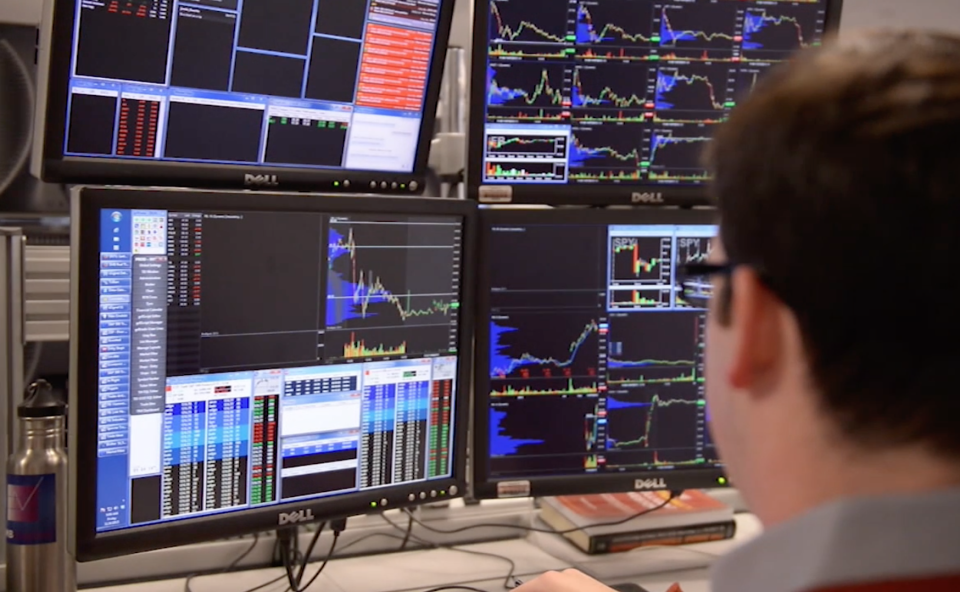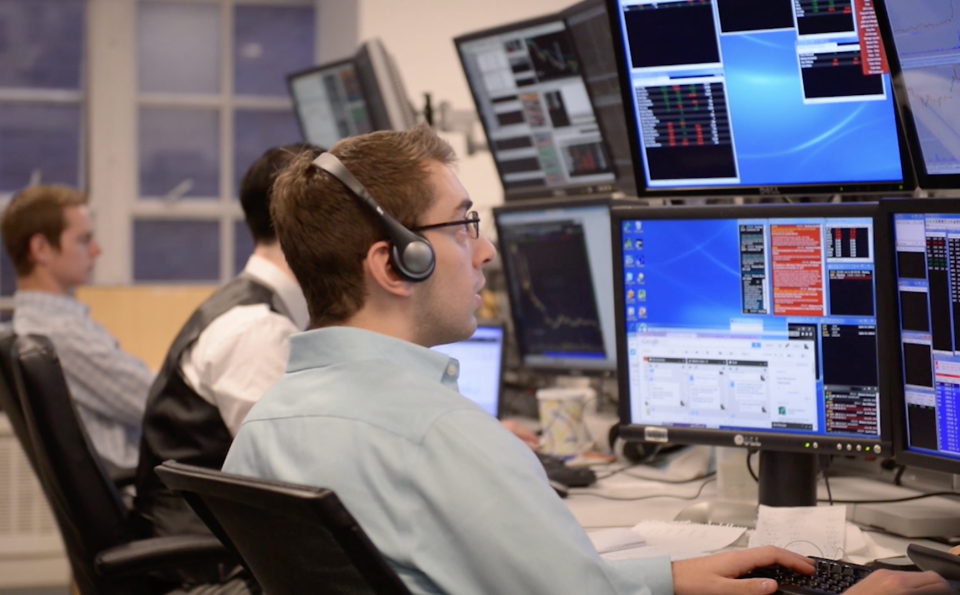4 lessons learned from training successful traders
By Brett Steenbarger, Mike Bellafiore and Steve Spencer
Every week we hear from aspiring traders asking how they can best pursue their success. In this article, we would like to share insights we’ve gained through our collaboration at SMB, a proprietary trading firm in New York.
Each of us has been involved in the training of professional traders for well over a decade. Over that time, we have learned a great deal about factors that make for trading success and failure. Our overriding takeaway is that the development of trading expertise is not so different from the development of elite performance in other fields, such as athletics and chess. It follows from a sustained developmental process.
Unfortunately, aspiring traders find few structured outlets for professional development. Whereas first-class athletic teams and chess organizations cultivate talent through years of development (high school and college competition, youth leagues, tournaments for performers at different talent levels), there are few comparable developmental platforms for young people seeking to build knowledge and skills in financial markets.

One result of this lack of developmental focus is a high failure rate, especially among active traders. Studying the investing performance of all traders in Taiwan, Barber and colleagues found that the group lost an average of 3.8% per year and 2.8% of personal income. Moreover, evidence suggests that traders do not learn from their losses, with the majority of those losses coming from experienced traders with a history of prior losses. A review of research finds that traders demonstrate cognitive biases and trading patterns that lead them to underperform market averages.
Still, our years of experience have also taught us that trading success exists across diverse ways of attacking markets and indeed can be cultivated through structured programs of development. The best known example of this has been the development of Tiger Cub money managers springing from Julian Robertson’s Tiger Management. Close mentoring and the development of a distinctive investment style led to superior returns over a period of years. Similarly, successful investment banks such as Goldman Sachs have cultivated talent by creating an internal university that facilitates personal as well as professional development. Smaller firms, such as the one where we collaborate, run internship and training programs that provide hands-on learning and skills development, much as occurs at minor league, developmental baseball clubs.
So what distinguishes the successful training efforts of financial organizations? Our experience points to four distinctive elements:
1. A structured curriculum – Medical schools offer an unusually clear view of the development of talent in performance domains. Every year, graduate programs of medical education produce competent professionals in fields as different as surgery, psychiatry, and internal medicine. Training begins with an undergraduate curriculum focused on basic science education. It then proceeds to observation and practice under experienced physicians followed by training in specialty fields. The curriculum thus addresses both knowledge and skill development, with sufficient time to cultivate high levels of skill. We have found it helpful to move new traders through three training programs in the first year, starting with a foundation of knowledge and proceeding through skill development in closely supervised simulated and live trading.
2. The integration of mentoring and coaching – Consider successful athletic organizations in college basketball and football as well as professional sports. The most successful coaches act as teachers and mentors, structuring practices to drill skills but also addressing the psychological aspects of performance. In the Department of Psychiatry where Brett teaches, psychiatry residents learn psychotherapy by video recording their sessions and replaying them with different supervisors. The review of the “tapes,” similar to the film reviews basketball and football teams conduct to prepare for upcoming games, facilitates mentoring of skills and the coaching of the performer’s own psychology. We have found it helpful for traders to send daily reviews to both a mentor/teacher and a performance coach, so that each day serves as professional and personal learning.
3. The organization of learning in teams – We have been struck by the success rates of efforts to train traders within the context of trading teams. Inexperienced traders taught basics and then left to learn on their own have a much lower success rate than those trading daily with their mentors and colleagues. Hedge Fund titan Kenneth Griffin Citadel, at Milken Institute Global Conference 2015, said, “Frankly you can’t succeed today in the markets unless you’re a part of a great team.” We agree. In medical education, the team concept is captured in the phrase “each one teach one.” Advanced medical students participate in training the beginners; interns supervise the advanced students; advanced residents supervise the interns; and attending physicians supervise the advanced residents. When each student is also a teacher, learning opportunities are multiplied. For example, we have seen particular success with junior traders building technology for senior traders to expand trading opportunities, while senior traders share their expertise with junior traders with respect to exploiting those opportunities. Similarly, junior traders who have mastered a specific trade setup may work narrowly with trainees on this opportunity, much as senior medical students mentor more junior ones in focal areas of experience.
4. Data based recruitment of talent – Success in performance fields starts with raw talent and proceeds with skill development through deliberate practice. Successful organizations recruit talent to ensure they are building on a solid base. Professional sports teams, for example, will measure the speed and athletic skill of prospective players. One joins an Olympic team only after having demonstrated prior success and development. Our internal research finds that unique cognitive and personality strengths distinguish traders with different strategies: successful investors are unlike successful daytraders; successful traders of macro markets are different from successful market makers and product specialists. One trader we work with is so fast with trade execution that a market making firm needed to place ‘guard rails’ on the firm’s order flow, as that trader was implementing decisions more quickly than their system could handle. A trader like this should gravitate toward short-term strategies that reward fast thought and action. Development is accelerated when training begins with students who possess the strengths required by their specific performance domains.

So what does this mean for aspiring traders? One important implication is that silos don’t work. Each one, teach none is a formula for failure. The aspiring trader should look for training within organizations that actively foster the development of new talent. Learning curves are greatly accelerated through mentoring, coaching, and teamwork.
A second implication is that trading is like medicine or sports, embracing many distinctive performance domains. What makes a good basketball player is different from what makes a good gymnast. What makes a great surgeon is not what makes a superior psychiatrist. Training programs not only impart knowledge and skills; they also facilitate self-discovery. Even within basketball or gymnastics, one typically specializes in particular positions or events. In a medical specialty such as psychiatry, one may find a focus in psychopharmacology, psychotherapy or child and family intervention. Via training, we discover where our passions and talents lie, and we cultivate those through structured learning, mentoring, and coaching with other specialists. Much of trading success consists of finding one’s niche within financial markets.
In short, the aspiring trader is best served by not trying to go it alone. Young athletes don’t try to make the Olympics on their own; nor do they join professional sports teams that way. Early career talent requires well structured developmental platforms that turn potential into performance. Those platforms exist at hedge funds, investment banks and proprietary trading firms — and they are succeeding.
This article was originally published on Forbes.
Mike Bellafiore and Steve Spencer are co-founders of SMB Capital and SMB|U
Brett Steenbarger, Ph.D. is a psychologist and trading coach
More posts by Mike Bellafiore
How to trade stocks for a living: Mike Bellafiore
8 trading lessons from a proprietary trading desk
9 reasons to trade at a proprietary trading firm
